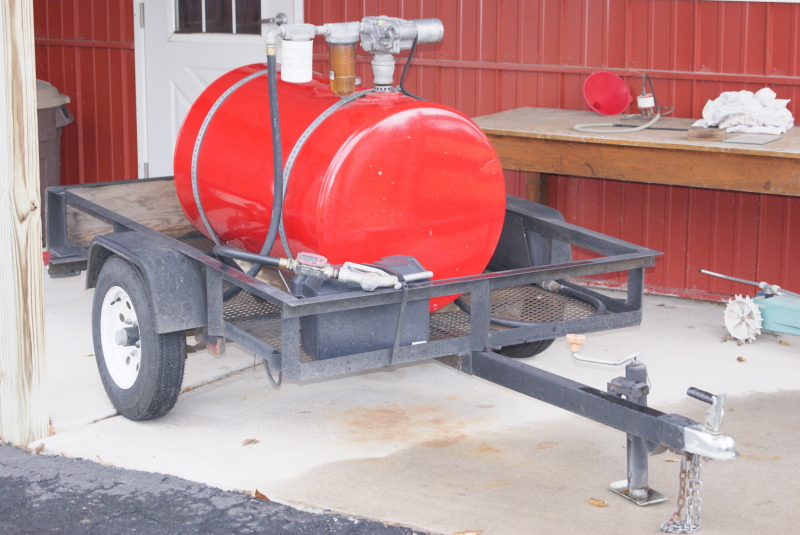Geico266
Well Known Member
Another thread got me to thinking about the possibility of using mogas to fill the RV-12 and the problems of what can / and will happen using "cans" to fill your airplane. Here are a few pointer I have encountered and learned during my UL years.
http://www.vansairforce.com/community/showthread.php?t=55793
My years of ultra light experience feeding the Rotax 912 has helped me see that this is not paranoia, it is fact. Contaminated fuel will bite your butt hard of you do not take is seriously. Please come up with a "fuel handling plan" to ensure you are using CLEAN fuel.
I am no expert, but I have developed a few rules to keep the contaminated fuel out of my airplane.
1. All gasoline contains dissolved water. When the fuel is cooled (as in flying into colder air) the dissolved water will come "out of solution" and settle to the bottom of the tank. Most water is ingested by the engine and you never know it was there. Water that collects in the tanks can become a problem if it is allowed to collect. Sump your tanks with enough volume to purge the fuel line in the -12 first flight of the day. No exceptions, No excuses. Even if you have done this 100 times and never found a drop of water, keep doing it. Eventually, you may be surprised.
2. Do not use gas that is more than 30 days old. For every 30 days mogas looses 1-2 octane points. It's not designed to to stored like 100ll. At a bare minimum add 50% fresh fuel to the tank to dilute to old fuel. Be mindful of your fuel's age. Fresh fuel is your 912's best friend.
3. Get in the habit of filtering your fuel if you use cans. Don't pour the last 1/2 gallon of your can into your plane. Leave it in the jug and look at it very closely. Inspect it. Look for water. Don't know what water looks like in fuel? add a 1/4 cup to the can and take a look so you know. Use your Mr. Funnel to get the water and fuel separate. Dump the extra fuel from the funnel back into your containers. Please! Do not take chances.
4. Ask me how I know this!
Feel free to add or discuss other fuel care details. Set your standards very high for keeping your fuel clean and fresh. Be "annal", be a fanatic, be superstitious, just be safe!

The above tank I built with dual filters and a sump drain on the bottom. The nozzle has a fuel "counter" so I can keep track of gallons used. So far I have pumped 6,000 gallons though this tank. Sorry for the rant, but this subject is very near and dear to me.
If you are serious about flying, get serious about your fuel. Don't be afraid to use & store mogas, just be smart about it.
JMHO
http://www.vansairforce.com/community/showthread.php?t=55793
My years of ultra light experience feeding the Rotax 912 has helped me see that this is not paranoia, it is fact. Contaminated fuel will bite your butt hard of you do not take is seriously. Please come up with a "fuel handling plan" to ensure you are using CLEAN fuel.
I am no expert, but I have developed a few rules to keep the contaminated fuel out of my airplane.
1. All gasoline contains dissolved water. When the fuel is cooled (as in flying into colder air) the dissolved water will come "out of solution" and settle to the bottom of the tank. Most water is ingested by the engine and you never know it was there. Water that collects in the tanks can become a problem if it is allowed to collect. Sump your tanks with enough volume to purge the fuel line in the -12 first flight of the day. No exceptions, No excuses. Even if you have done this 100 times and never found a drop of water, keep doing it. Eventually, you may be surprised.
2. Do not use gas that is more than 30 days old. For every 30 days mogas looses 1-2 octane points. It's not designed to to stored like 100ll. At a bare minimum add 50% fresh fuel to the tank to dilute to old fuel. Be mindful of your fuel's age. Fresh fuel is your 912's best friend.
3. Get in the habit of filtering your fuel if you use cans. Don't pour the last 1/2 gallon of your can into your plane. Leave it in the jug and look at it very closely. Inspect it. Look for water. Don't know what water looks like in fuel? add a 1/4 cup to the can and take a look so you know. Use your Mr. Funnel to get the water and fuel separate. Dump the extra fuel from the funnel back into your containers. Please! Do not take chances.
4. Ask me how I know this!
Feel free to add or discuss other fuel care details. Set your standards very high for keeping your fuel clean and fresh. Be "annal", be a fanatic, be superstitious, just be safe!
The above tank I built with dual filters and a sump drain on the bottom. The nozzle has a fuel "counter" so I can keep track of gallons used. So far I have pumped 6,000 gallons though this tank. Sorry for the rant, but this subject is very near and dear to me.
If you are serious about flying, get serious about your fuel. Don't be afraid to use & store mogas, just be smart about it.
JMHO
Last edited:





